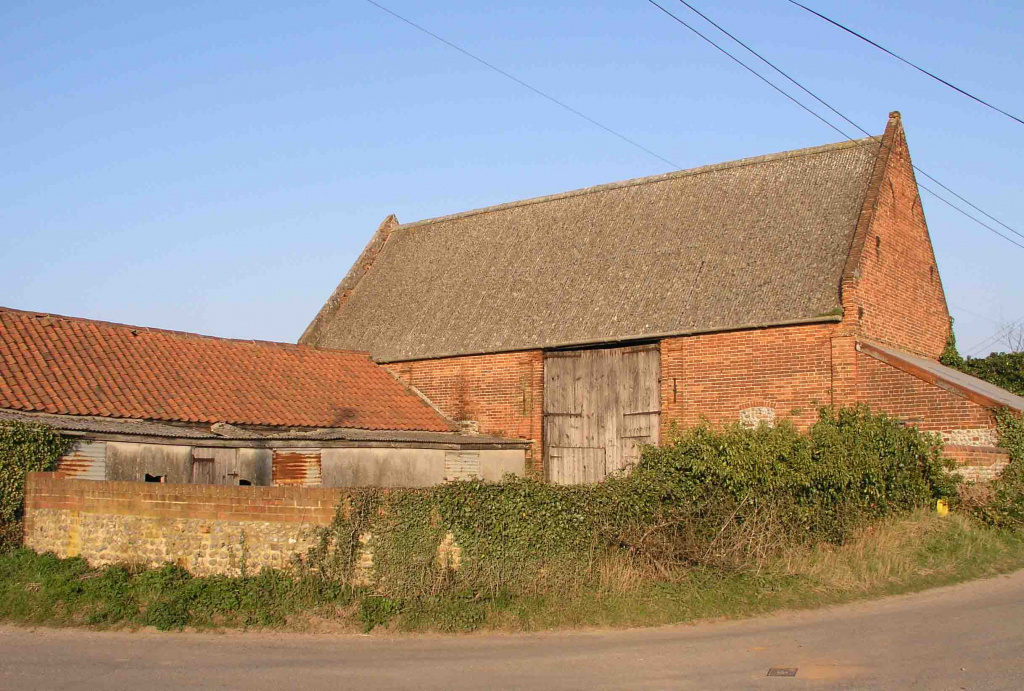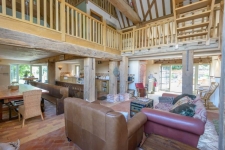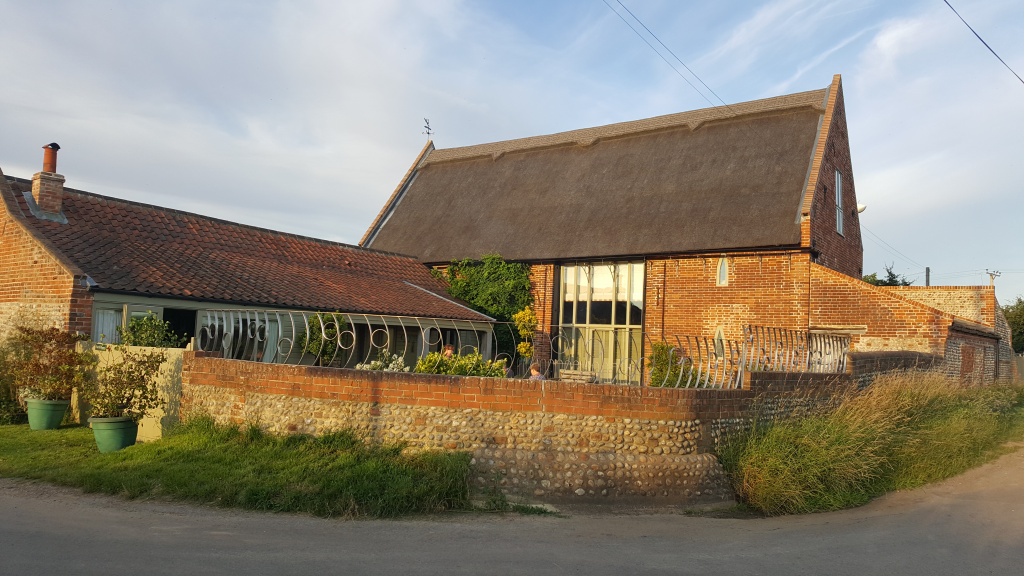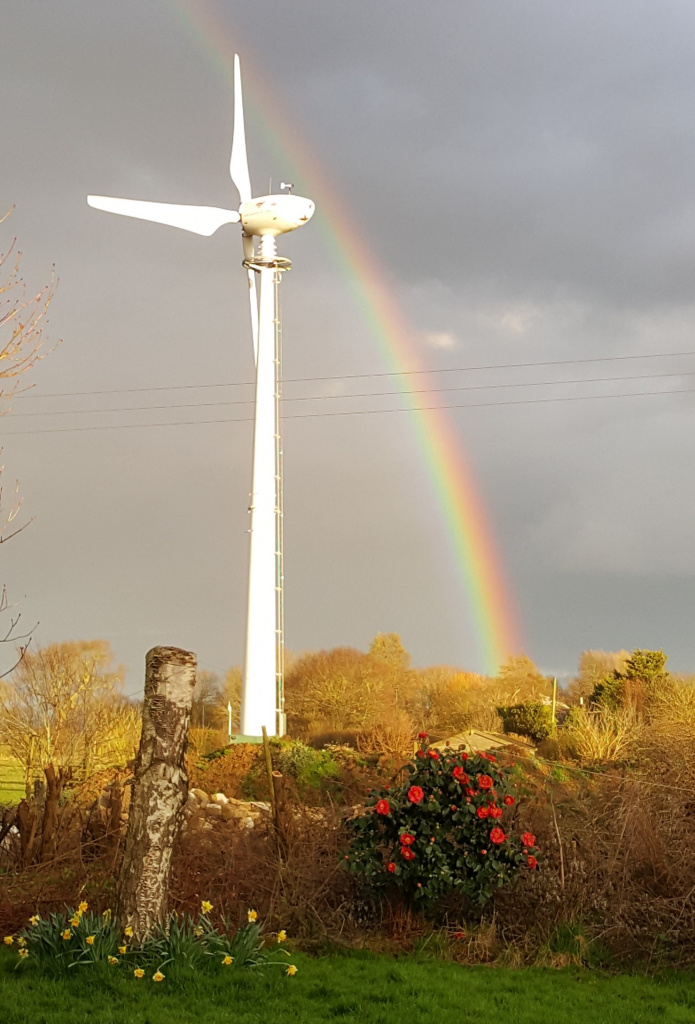HISTORY OF RUNNING HARE BARN AND THE OLD PIGGERY
Built about 200 years ago as a threshing barn and piggery, they were, for most of their life, used for agricultural purposes. When I moved here in 1995 the barn was used for fertilizer storage. The Old Piggery was a derelict pig unit and the barn yard was full of weeds and brambles.
In 2005 the farmer decided to sell it and to cut a long story short, I begged, borrowed and stole and managed to buy the barn and the piggery together plus the additional land that we have now – we’re on about 3 acres in total. If only I’d known then what hard work lay ahead ……! The only permission I could get for the buildings was holiday accommodation, so I set out to convert The Old Piggery first and this was completed and saw its first guests in 2008. In the meantime, I put some pigs to work in the barn yard to clear it and for a time bred rare breed pigs there and in the adjoining stable (now a bathroom!)
For a time the barn was used for lambing, and then the 500 straw bales I collected for the construction of the straw bale barn you can see as you drive down the lane (finished in 2011).
‘Elsie’ the wind turbine arrived in 2012,
After a lot of blood, sweat and tears the conversion of Running Hare Barn was finally completed in 2016 and the first guests stayed in July of that year.

THE CONVERSION OF RUNNING HARE BARN
The Old Piggery was opened as a holiday home in 2008 and I started work in earnest on the barn in 2012. The original roof would have been thatch, but when I bought it, it was asbestos sheeting. I had the cheaper option of replacing it with tiles but decided that the cost of thatching would be well worth it and I am very pleased I did. The thatch came from West Somerton, just down the coast towards Winterton and it was put on by local thatchers. I also had to rebuild the north facing gable end which was close to collapse at the time.
Throughout the conversion I aimed (and largely succeeded) to use local craftspeople and materials and kept the work as environmentally friendly as possible.
The walls are lined with a material called Hemp Crete which is a breathable and sculptable material made of chopped hemp and lime, sprayed onto the walls with water added. It is up to 15” thick in places and provides excellent insulation. The plaster on the top of this is lime plaster.
We installed a ground source heat pump (the underground collector is the size of an Olympic swimming pool and situated in the field). This has an efficiency (COP) of 3.2 i.e. for every kilowatt of electricity we put into the system, it provides us with 3.2 kw of heat to both the barn and The Old Piggery.
We have large underground tanks which harvest all the rainwater from the buildings on site and this is used for flushing toilets, outside taps etc.
A heat recovery and ventilation system provides continuous fresh, filtered air to ensure a healthy environment throughout the entire barn. In the winter the system recovers 94% of the heat from the extracted air for re-use. In the future we hope to install a similar system in The Old Piggery and, as average temperatures continue to rise, to install active cooling for both properties.
The tie beams at the top of the building are all original but the others have all been reclaimed from local buildings and, along with many other bits – including all the floor bricks which came from a reclamation yard in North Walsham. They also made the large dining table (old scaffold boards and pieces of farm machinery) and the butchers block (made from an old cattle cake cutter).
All of the woodwork – stairs, doors, balconies, kitchen etc. was done by a very talented local team – Kevin and Alex of Kipper Joinery, based in Catfield at the time.

The metal work – the guttering brackets, the knotted rods between the stairs and the balcony uprights, the brackets for the various hanging farmyard tools in the mezzanine bedrooms and the curtain rails – was all done by a local craftsman blacksmith, Jason Greenberry. He also did all the railings on the Piggery courtyard.
The hare weather vane was made by his ‘boss’ and under whom Jason did his apprenticeship – Bill Corduroy – another craftsman blacksmith who had a smithy in the village but sadly passed away in 2022.
Much of the detail – the hare window in one of the bedrooms, the marble ‘alter’ in one of the bathrooms and various other bits and pieces were all created, alongside his great building work, by my builder, Alan. My other builder/handyman, John Winter, did a bit of everything and worked for me for about 4 years during the conversion.
Many of the items have been sourced from local auctions, as well as antique shops, junk shops, friends, Ebay and all over the place! Friends found bits, donated things, bought things and it’s all come together as a result of many people’s input.
Running Hare Barn has been a joint effort and all the better for it. I have put heart and soul (not to mention a lot of money!) into making it a bit special and I really hope you enjoy your time here.

OUR GREEN ENERGY CREDENTIALS:
As well as the ‘green’ items we incorporated into the conversion – construction materials, ground source heat pump, heat recovery and ventilation system and rainwater harvesting – we have our own renewable electricity generation on site (when the sun is shining and/or the wind is blowing!)

ELSIE – our 80 kwh wind turbine, the main source of our on site generation, is 33m high at the tip of her blades and started generating for us in 2012. On an average year she will generate sufficient for the site, the excess being exported to the grid, roughly enough for the equivalent of 1/5th of the homes in East Ruston.
PV SOLAR ARRAY – situated on the strawbale barn in the field, 19kwh and helps to top up the on site generation.
BATTERY STORAGE – we have 200kwh of battery storage, which charges from any excess on-site generation and helps to run the essential requirements of the three properties when the weather is against us and there is little or no generation from the turbine or PV.
On the face of it this all looks like ‘free’ energy’, but everything we use comes at a cost. Although this is a source of income for us, when there is no generation or battery reserves we have to import from the grid at commercial rates, which are significantly higher than domestic rates. In addition, there has been significant initial investments and ongoing maintenance costs so we are very keen not to waste energy – not least to protect our planet – and would ask for our guests to be mindful of this.
And last but not least…
RECYCLING – from an environmental perspective we are big fans of recycling and hope our guests will be too. We ask guests to recycle wherever they can in an attempt to reduce landfill and try to make it as easy as possible to do so.
